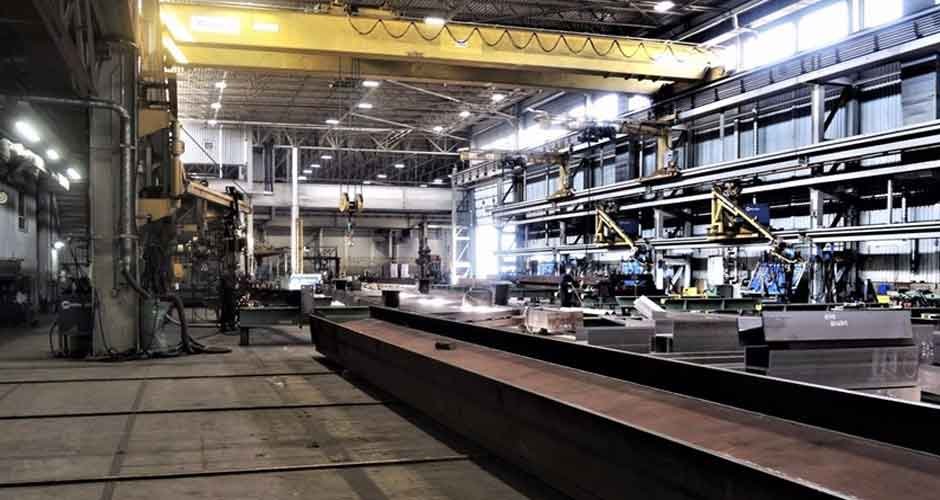The automotive industry has always been at the forefront of technological advancements. The landscape of automobiles is constantly evolving from self-driving cars to electric vehicles. Similarly, the automotive repair sector is undergoing a transformation of its own, with a growing emphasis on steel structure workshops. The future of automotive repair focuses on five key trends in automotive shop building, particularly on automotive steel structures.
- Sustainability and Eco-Friendly Practices
One of the most prominent trends in the automotive repair industry is a strong commitment to sustainability and eco-friendly practices. Automotive shop buildings are increasingly being designed and constructed with a focus on reducing their environmental impact. Steel structures play a crucial role in this trend due to their recyclability and durability.
Steel, as a building material, is known for its sustainability. It can be recycled repeatedly without losing properties, making it an ideal choice for automotive shop buildings. Moreover, steel structures can accommodate advanced energy-efficient systems such as solar panels and energy-efficient insulation, reducing their carbon footprint.
- Advanced Technology Integration
In the automotive repair industry, technology is evolving at an unprecedented rate. The future of steel structure workshops includes the integration of advanced technologies like augmented reality (AR), artificial intelligence (AI), and the Internet of Things (IoT). These technologies will revolutionize repair processes, making them faster, more efficient, and more accurate.
AR can provide technicians with real-time repair instructions and schematics, while AI can analyze vehicle diagnostics and suggest optimal repair strategies. IoT-connected equipment can facilitate remote monitoring and predictive maintenance, ensuring that automotive steel structures remain in top condition.
- Customization and Modular Design
Automotive repair facilities are increasingly embracing the concept of customization and modular design. Steel structures offer a high degree of flexibility, allowing for the creation of tailored automotive workshops. Whether it’s a small independent repair shop or a large dealership, steel structures can be designed to meet specific needs.
Modular construction techniques make expanding or reconfiguring the workshop easier as business requirements change. This adaptability is a significant advantage in a dynamic industry like automotive repair, where workshop layouts and equipment requirements can vary widely.
- Safety and Compliance
Safety and compliance are paramount in automotive repair, and steel structure workshops are no exception. The future of automotive shop buildings includes a heightened focus on safety features and compliance with industry standards and regulations.
Steel structures provide excellent structural integrity, ensuring that automotive repair facilities can withstand harsh weather conditions and seismic activity. Additionally, they can be designed to incorporate advanced safety features such as fire-resistant coatings, robust ventilation systems, and secure access control.
- Sustainable Energy Solutions
Automotive repair facilities also explore sustainable energy solutions as the world shifts toward renewable energy sources. Automotive steel structures can be equipped with renewable energy systems such as solar panels and wind turbines. These energy sources reduce operational costs and contribute to a greener automotive repair industry.
The Cost-Efficiency of Automotive Steel Structure Workshops
The sustainability and advanced technology advantages, automotive steel structure workshops offer a significant cost-efficiency advantage. These structures are not only durable but also cost-effective to construct and maintain.
Steel structures’ upfront construction costs are often lower than traditional building materials, such as concrete or wood. The efficiency of steel construction, including its ease of assembly and shorter construction time, can result in substantial savings. Additionally, steel structures’ long lifespan and low maintenance requirements translate to lower operational costs over the years.
Furthermore, the customizable nature of steel buildings allows businesses to optimize space usage, minimizing wasted square footage. This efficiency can increase productivity and revenue generation within the same building footprint. In a competitive automotive repair industry, cost-efficiency can make a significant difference in the long-term profitability of a business, making automotive steel structure workshops an attractive choice for savvy entrepreneurs.
Conclusion
The future of automotive repair is closely intertwined with the evolution of automotive shop buildings, with a strong emphasis on automotive steel structures. The trends outlined in this article – sustainability, advanced technology integration, customization, safety, and sustainable energy solutions – are shaping how repair facilities operate.
Coastal Steel Structures is a trusted partner for those looking to embrace the future of automotive repair by constructing state-of-the-art steel structure workshops. Their expertise in designing and constructing automotive shop buildings that align with these trends makes them the go-to choice for forward-thinking automotive businesses.
To learn more about Coastal Steel Structures and how they can help you create the automotive repair facility of the future, visit their website at Coastal Steel Structures. Don’t miss the opportunity to stay ahead in the automotive repair industry by building a cutting-edge steel structure workshop that combines sustainability, technology, safety, and efficiency.






